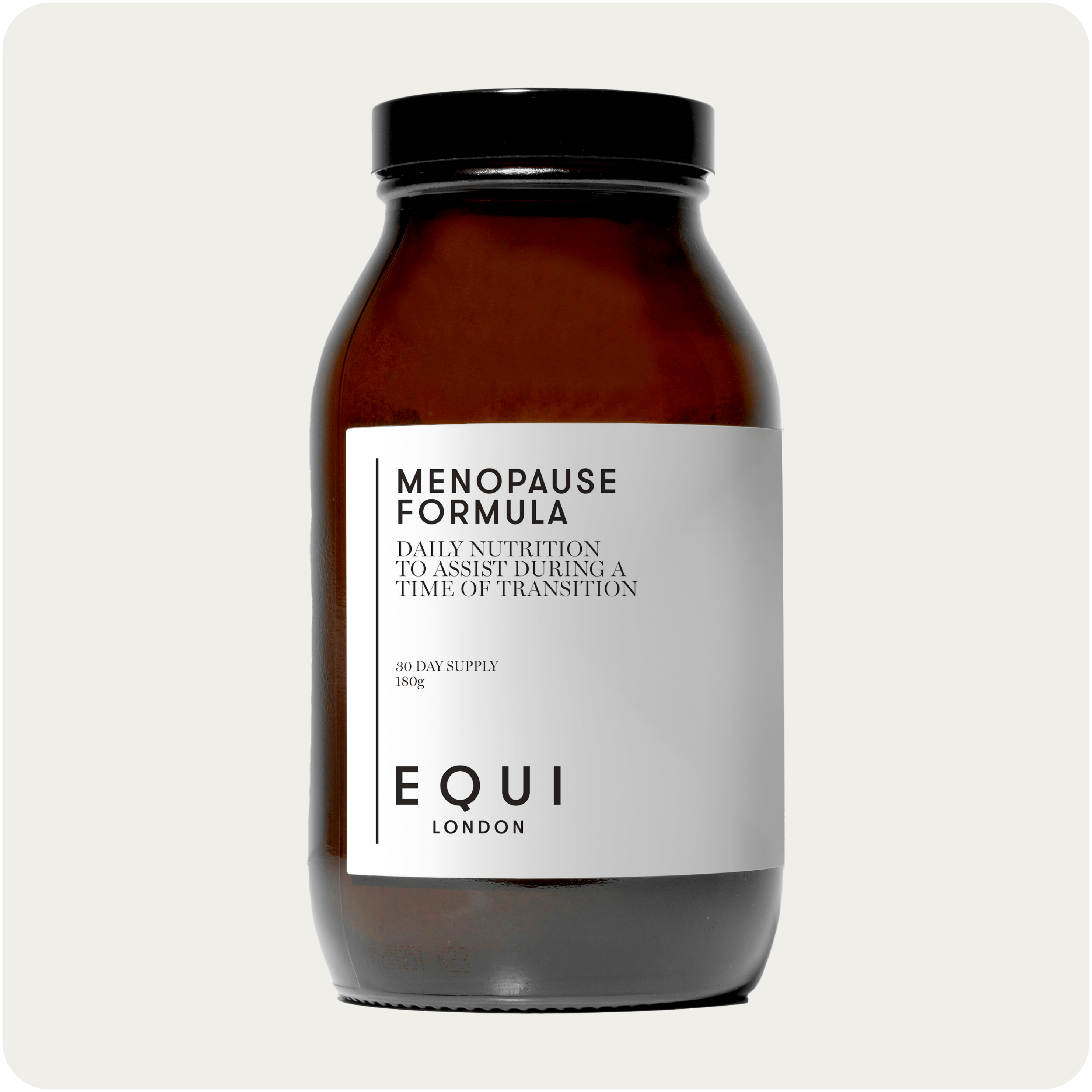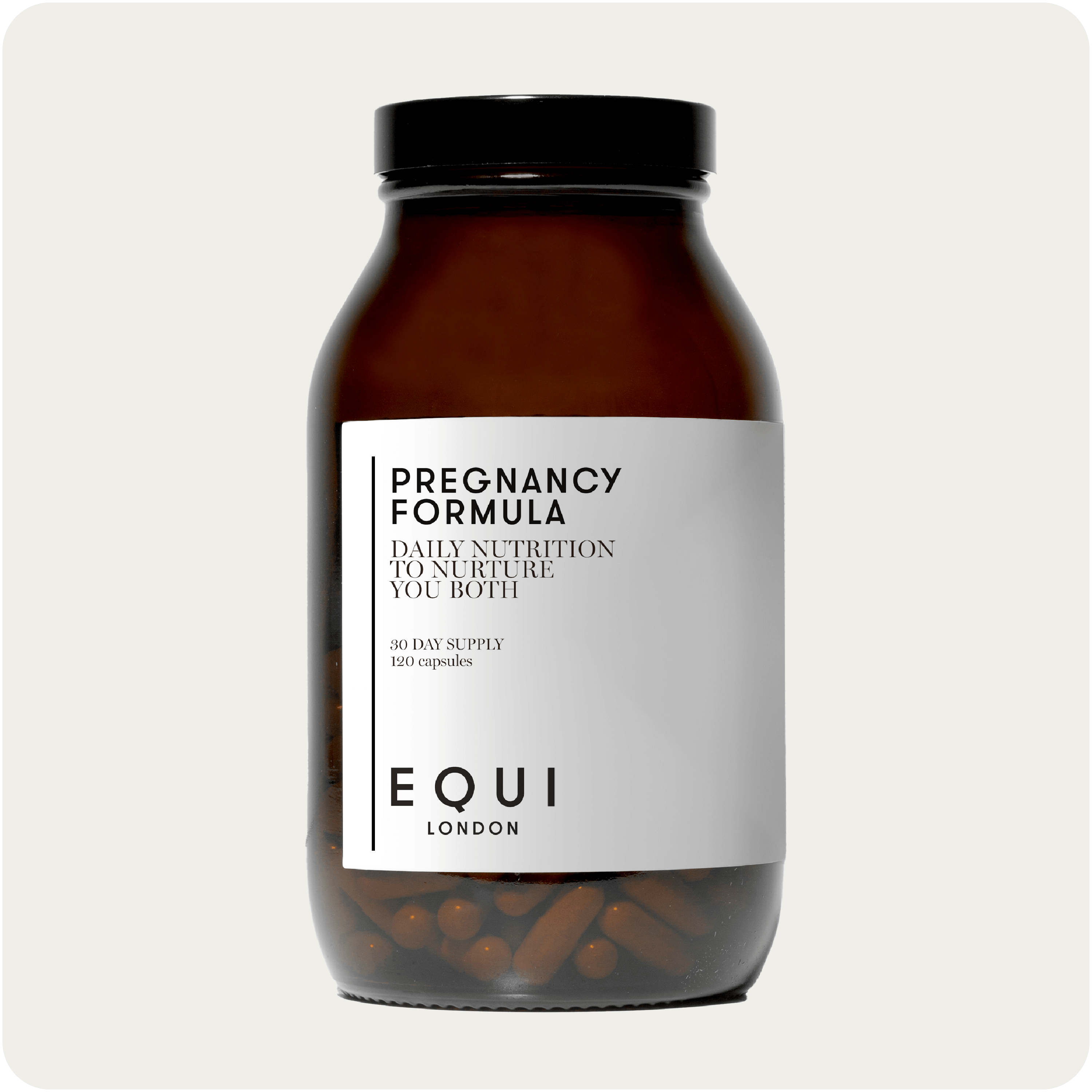
Today, we're venturing into a topic that is incredibly relevant for many of us: perimenopause and its various associated symptoms. Despite being a natural part of every woman's life cycle, perimenopause often gets overshadowed and misunderstood. This phase can be a time of huge uncertainty due to the plethora of symptoms that it brings, all of which we will be delving into today.
Perimenopause is the beginning of a transition, a precursor to menopause that can last for several years. You might be surprised to know it can begin as early as your late 30s or early 40s. During this time, your body begins to make less of the hormone’s oestrogen and progesterone, and you may start to notice subtle changes, both physical and emotional.
While you might already be familiar with some of the common signs—irregular periods, hot flashes, or night sweats—perimenopause also comes with a host of lesser-known symptoms that aren't always directly linked to this stage of life. In fact, there are 34 known symptoms, ranging from changes in libido to mood fluctuations, and even cognitive effects, which can feel disconcerting if you're not expecting them. Moreover, the perimenopausal period is not just a personal journey. It has broader implications too, impacting our work, relationships, and society at large. Despite this, it's often a subject that's under-researched and overlooked.
In this blog, we want to shed light on the various aspects of perimenopause, from the commonly understood to the often ignored. We'll delve into the physiological changes you might experience, discuss the wider impact, and most importantly, provide you with some practical strategies to navigate this significant life stage with confidence. Welcome to our comprehensive guide to perimenopausal symptoms. With the right tools in place, we hope to help you embrace this journey as a natural part of womanhood, understand the changes your body is undergoing, and learn how to take care of your health during this unique time.
As female founders, Alice and Rosie felt it was extremely important to address this significant life stage of women. They decided to develop Menopause Formula and Menopause Oil Edition to help women overcome hormonal fluctuations whilst also aiding skin rejuvenation, bone density, joint health, and the cardiovascular system. Menopause Formula is an expertly formulated supplement blending premium, bio-available nutrients specifically selected to boost the female body at a time when it is most in need of balance, whilst Menopause Oil Edition provides a daily, nutrient-rich ingestible oil blend specifically formulated for the needs of women in their forties and beyond.
The 34 Symptoms of Perimenopause
Before we deep dive into some of the symptoms in more detail, we wanted to address the 34 known symptoms of perimenopause. Whilst it’s important to note that not all women will experience every symptom, and their severity can greatly differ from person to person, here at Equi, we want to raise awareness of what these are. Here’s a helpful list of the 34 known symptoms of perimenopause:
- Changes in menstrual cycle (frequency, duration, flow)
- Hot flashes
- Night sweats
- Insomnia or disrupted sleep
- Fatigue
- Mood swings
- Irritability
- Depression
- Anxiety
- Memory problems
- Difficulty concentrating
- Decreased libido
- Vaginal dryness
- Changes in sexual response
- Frequent urination
- Urinary urgency
- Urinary tract infections
- Weight gain
- Hair loss or thinning
- Increased body hair
- Dry skin
- Loss of breast fullness
- Breast tenderness
- Headaches
- Joint pain
- Muscle tension
- Changes in body odour
- Bloating
- Digestive issues
- Changes in vision
- Ringing in the ears
- Changes in allergies
- Rapid heartbeat
- Bone loss or osteoporosis
Please remember that this list is not exhaustive, and women may experience other changes. If you are experiencing any unusual or severe symptoms, it's essential to consult with a healthcare provider for guidance and potential treatments.
You may be wondering, ‘why does perimenopause affect so many body systems?’
To answer this question, we need to understand the critical role that oestrogen plays, which is at the heart of why perimenopause carries such an array of symptoms. Oestrogen's influence extends far beyond reproductive health, and its wide-ranging effects can be attributed to the presence of oestrogen receptors throughout the whole body. Oestrogen receptors are found in nearly every single cell, including those in the heart, brain, bones, and skin, in addition to the reproductive organs (1). Fascinating right?! We think it’s pretty incredible! What’s more, this wide distribution underpins the diverse role oestrogen plays in numerous biological processes, from regulating cholesterol levels to maintaining skin elasticity, bone density, and cognitive function.
During perimenopause, fluctuating and generally declining oestrogen levels can impact all these areas, leading to symptoms like hot flashes, sleep disturbances, mood swings, memory problems, and changes in skin and bone health (2). Moreover, emerging research has highlighted oestrogen's role in regulating energy metabolism and body weight too (3), offering a potential explanation for weight changes observed during perimenopause. Hopefully we have helped shed light on the broad role of oestrogen, providing an insight into the wide array of symptoms that can emerge during perimenopause.
Understanding the Lesser-Known Symptoms of Perimenopause
When we think about perimenopause, the first symptoms that often come to mind are usually hot flashes and changes in menstrual cycle. However, this transitional period that marks the end of a woman's reproductive years is much more multifaceted, affecting various aspects of physical and emotional health that aren't as openly discussed. Keep reading as we go into some detail about the lesser-known symptoms of perimenopause:
“Brain Fog”
One commonly reported, but lesser discussed symptom of perimenopause is "brain fog" - an umbrella term referring to a suite of cognitive symptoms including forgetfulness, difficulty concentrating, confusion, and a general sense of mental cloudiness. It's the frustrating feeling of your brain not being as sharp or clear as you're used to. During perimenopause, we may find we struggle to remember words or tasks, or attention span may feel shorter. Fluctuating hormones, particularly oestrogen, are largely to blame. Oestrogen has a strong influence on certain cognitive functions as it interacts with neurotransmitters in the brain like serotonin and dopamine (4). Several studies have shown that women can experience cognitive changes during perimenopause, often reporting troubles with memory and attention (5). So, if you're in perimenopause and feeling a bit foggy, you're certainly not alone. Remember, these changes are usually temporary and will subside after the transition to menopause. In the meantime, healthy lifestyle strategies like regular physical activity, a balanced diet, and good sleep hygiene can help manage these symptoms.
Mood Changes
You may be all too familiar with hormones affecting mood thanks to years of PMS but during perimenopause, it’s the fluctuating levels of oestrogen that affects the neurotransmitter systems in our brain specifically (6). Lower levels of oestrogen can reduce the production of a particular neurotransmitter, known as serotonin, often called the 'feel-good' hormone, leading to feelings of sadness or depression. Likewise, lower levels of oestrogen may increase the production of the stress hormone cortisol, leading to increased feelings of anxiety (7). Mood swings are also prevalent due to these hormonal fluctuations and can be compounded by other symptoms of perimenopause like disrupted sleep. Furthermore, societal, and personal factors, such as the stigma associated with menopause and changes in body image, can contribute to a decrease in self-esteem during this phase of life (8). Gosh, it feels like a lot to take in, doesn’t it? But don’t fear – just because these symptoms exist, it doesn’t mean they will present for you and there is also a lot you can do to help alleviate these. Read our previous blog on the Happiness Hormones for more support.
Difficulty Sleeping
Sleep disturbances are also a common symptom experienced by women during the perimenopausal transition, often manifesting as difficulty in falling asleep, maintaining sleep, or waking up earlier than desired. These disruptions can lead to daytime tiredness and irritability, greatly affecting a woman's overall quality of life. One factor contributing to sleep disturbances during perimenopause are night sweats (9). As oestrogen levels decline, it can disrupt the body's temperature control, leading to sudden feelings of heat, sweating, and subsequent awakenings during the night (10). Beyond the physical discomfort, interrupted sleep can affect emotional well-being, contributing to mood swings and irritability too (11). This can cause a bit of a viscous cycle of poor sleep and daytime fatigue, creating a stressful feedback loop, further exacerbating these symptoms as well. Whilst getting better sleep is not always that simple, doing some positive things to support your sleep hygiene can help here. Simple changes such as wearing cooler nightwear, using a lighter tog duvet and sleeping with the window open might be a good idea.
Palpitations
Palpitations, characterised by a sensation of the heart pounding or racing, are a lesser-known but nonetheless significant symptom some women may experience during perimenopause. Oestrogen, which fluctuates during the perimenopausal phase, influences the autonomic nervous system, which controls our heart rate and can contribute to these palpitations (12). Hormonal fluctuations can result in changes in blood vessels and blood pressure, further contributing to the sensation of palpitations (13). Also, some of the other symptoms associated with perimenopause, which we have covered such as anxiety and sleep disturbances, can exacerbate the feelings of palpitations. If you do have palpitations, it’s really important to get them checked out as they can be associated with other medical conditions. Also, just be aware that palpitations may be more noticeable at night, during periods of rest or times of stress (14).
As mentioned, it's important to note that while palpitations can be a symptom of perimenopause, they can also indicate other health conditions, such as heart disease or an overactive thyroid. Women experiencing new or worsening palpitations should seek medical attention to rule out these other potential causes.
Headaches and Migraines
Headaches and migraines are often associated with hormonal shifts, and they may worsen during the perimenopause transition due to fluctuating oestrogen levels. One reason behind this is that oestrogen influences the release of serotonin (our happy hormone). When oestrogen levels drop, it can trigger a decrease in serotonin, which may result in a migraine (15). Hormonal fluctuations can also lead to increased inflammation and changes in the brain's blood vessels, both of which are implicated in the onset of migraines (16). So, whether you have always suffered with headaches and migraines or not, just be aware if they are cropping up for you, they may be associated with the perimenopause. Nutrition plays a vital role in reducing the onset of migraines - read more about it in our previous blog.
Muscle Aches and Joint Pains
Muscle aches and joint pains are a common but less-discussed symptoms of perimenopause that many women experience. It's thought that this is because oestrogen, which has anti-inflammatory properties, influences the fluid retention that helps keep joints lubricated (17). We also know that oestrogen is involved in bone health too. One study noted a significant association between menopause status and knee joint pain, with the pain more prevalent in women going through perimenopause (18). Another study found that up to 50% of postmenopausal women report experiencing muscle discomfort, further validating the link between hormonal changes and musculoskeletal pain (19). So don’t just put down any muscle aches or joint pain to exercise, it could be your hormone levels!
Essential fatty acids play a vital role in reducing inflammation, which is why we developed Menopause Oil Edition. It contains 808mg of omega 3 fatty acids from organic cold-pressed flaxseed and hempseed oil - two exceptional plant-based oils, providing anti-inflammatory support, for joints, skin, and cardiovascular health too.
Dry and Itchy Skin
You may be surprised to hear that oestrogen is crucial to maintaining skin health! It impacts your skin's thickness, moisture, and elasticity, so as levels drop during perimenopause, your skin may become dry and itchy (20). Women’s skin loses about 30% of its collagen during the first five years of menopause, which also leads to dryness, itching, and increased sensitivity (21). The decrease in oestrogen also affects the production of natural oils too, impacting the appearance of the skin (22). Over time, the loss of elasticity leads to the formation of fine lines and wrinkles, making skin health an important consideration during perimenopause – for more support on this important topic, read our recent blog all about fine lines and wrinkles.
Recurrent Urinary Tract Infections (UTIs)
One of the lesser-discussed symptoms of perimenopause can be an increase in urinary tract infections (UTIs), which can cause discomfort and frustration for many of us. A decline in oestrogen, characteristic of the perimenopausal period, is linked with changes in the urinary tract that can make women more susceptible to infections (23). Oestrogen helps to maintain the health and normal function of the urinary tract. It supports the lining of the bladder and urethra and helps to keep the urinary tract's natural balance of beneficial bacteria. When oestrogen levels decrease during perimenopause, these protective effects can diminish. This can lead to a thinner bladder lining, reduced bladder capacity, and an imbalance in the urinary tract's natural bacteria, all of which can predispose a woman to UTIs (24). Furthermore, perimenopause often accompanies changes in the immune system, making it harder to fight off infections, including UTIs (25). Therefore, it's essential to be vigilant about UTI symptoms and seek treatment promptly to prevent complications.
Vaginal Dryness
Vaginal dryness and discomfort during sex are common yet often underreported symptoms of perimenopause. Oestrogen plays a vital role in maintaining vaginal health, lubrication, and elasticity (26). When levels drop, the vaginal walls can become thinner, drier, and less elastic, leading to what is known as vaginal atrophy. Symptoms of vaginal atrophy include vaginal dryness, discomfort or pain during sex, and an increase in urinary tract infections as mentioned. Many women may also experience itching, burning, and inflammation in the vaginal area, and these symptoms can significantly impact sexual health, emotional wellbeing, and overall quality of life (27). Furthermore, these changes may lead to dyspareunia, a term for painful sexual intercourse, which can affect sexual desire and relationships (28). Although these symptoms are common, they're not an inevitable part of ageing, and treatments are available, including over-the-counter lubricants, vaginal moisturisers, and prescribed local oestrogen therapy. If you are experiencing these symptoms, it's important to speak with a healthcare provider to explore the best solutions for you. Sea buckthorn is proven to soothe intimate dryness and discomfort.
We have included organic cold-pressed sea buckthorn oil in Menopause Oil Edition as this incredible oil is revered for its moisture bringing properties, helping to address some of the symptoms of the perimenopause.
Low Libido
Experiencing a drop in libido or sexual desire is another common symptom many women encounter during perimenopause. This is largely due to the fluctuating and decreasing levels of hormones such as oestrogen and testosterone, both of which play significant roles in female sexual function (29). As mentioned, oestrogen helps maintain the health and lubrication of the vaginal tissue, so a decline can lead to vaginal dryness and discomfort during intercourse, impacting sexual desire (30). Testosterone also contributes to sexual desire in women, and since it decreases during this transition, it further contributes to a diminished libido (31). Lots of other factors affect libido too, such as mood changes, sleep disturbances and changing body image. However, it's essential to understand that these changes don't have to signal the end of a fulfilling sex life. Talking openly with your partner and seeking advice from healthcare providers can lead to effective strategies and support that can help.
Weight Gain
Weight gain is a common, yet frustrating, symptom experienced by many women during the perimenopause stage. This weight often accumulates around the abdomen, as opposed to the hips and thighs where women might have noticed weight increase before. Hormonal shifts, aging, and lifestyle factors all contribute to this midlife weight gain. Oestrogen appears to influence body weight regulation and fat distribution, so a drop in this hormone can lead to weight gain and changes in body composition (32). Furthermore, as we age, muscle mass naturally decreases and fat percentage increases, which can slow down metabolism and contribute to weight gain (33). It's important to note that while weight gain during perimenopause is common, it's not inevitable. An increase in physical activity and a balanced diet can help maintain a healthy weight during this transition period. Remember to seek guidance from a healthcare professional or nutritional therapist before making any major changes to your diet or exercise routine.
A Final Note…
Perimenopause has far-reaching societal and economic implications, which we felt it was important to highlight. The transition phase, characterised by a range of physical and psychological symptoms, can profoundly impact a woman's professional and personal life, often leading to reduced productivity and absenteeism according to the data (34). A lack of understanding and support for perimenopausal symptoms can lead to lower job satisfaction, increased sick leave, and even premature departure from the workforce (35). For example, it’s recently been reported that 1 in 10 women quit their jobs due to the symptoms associated with the menopause. However, the UK’s Department of Work and Pensions reported that menopausal women are still the fastest-growing workforce demographic. Some employers are putting policies in place to support women through this transition, but more work needs to be done. There's also a lack of adequate research into perimenopause, leaving many women feeling overlooked and misunderstood. However, what is positive is that the topic has gained a lot more coverage in the press in the last few years, thanks to a few celebrities who are pushing for change. In the meantime, we will keep talking openly about this life stage, spread more awareness and support women through this transition with confidence.
Menopause Formula is the only daily supplement to include all of the 48 vitamins and nutrients that help naturally rebalance all 10 systems in the body. A combination of our Menopause Formula & ingestable Menopause Oil Edition to naturally balance and enhance the female body and mind during a time of hormonal transition can be purchased here.
References
-
Prossnitz ER, Barton M. (2014) Oestrogen biology: New insights into GPER function and clinical opportunities. Mol Cell Endocrinol. 389(1-2), pp. 71-83.
-
Eskin BA, et al. (2011) The Dual Role of Oestrogens on Osteoarthritis. Arthritis.
-
Mauvais-Jarvis F, Clegg DJ, Hevener AL. (2013) The role of estrogens in control of energy balance and glucose homeostasis. Endocr Rev. 34(3), pp. 309-38.
-
Sherwin, B. B. (2012). Oestrogen and cognitive functioning in women: Lessons we have learned. Behavioural Neuroscience, 126(1), pp. 123–127.
-
Greendale, G. A., et al. (2010). Effects of the menopause transition and hormone use on cognitive performance in midlife women. Neurology, 72(21), pp. 1850–1857.
-
Gordon, J. L., et al. (2015). Ovarian Hormone Fluctuation, Neurosteroids, and HPA Axis Dysregulation in Perimenopausal Depression: A Novel Heuristic Model. American Journal of Psychiatry, 172(3), pp. 227–236.
-
Morrison, M. F., et al. (2006). Oestradiol replacement enhances working memory in middle-aged rats when initiated immediately after ovariectomy but not after a delay. Journal of Neuroscience, 26(43), pp. 11300-11309.
-
Chrisler, J.C., et al. (2018). The strange case of Dr. Jekyll and Ms. Hyde: A review of how the microbiome is different in women compared to men. Journal of Behavioural Medicine, 41(4), pp. 582-593.
-
Kravitz, H. M., et al. (2003). Sleep disturbance during the menopausal transition in a multi-ethnic community sample of women. Sleep, 26(5), 514-523.
-
Freedman, R. R., & Roehrs, T. A. (2007). Sleep disturbance in menopause. Menopause, 14(5), pp. 826-829.
-
Kravitz, H. M., et al. (2008). Sleep disturbance during the menopausal transition in a multi-ethnic community sample of women. Sleep, 31(7), pp. 979-990.
-
Khan, D., Ansar Ahmed, S. (2017). The Immune System is a Natural Target for Oestrogen Action: Opposing Effects of Oestrogen in Two Prototypical Autoimmune Diseases. Front Immunol. 6, p. 635.
-
Gold, E. B., et al. (2006). Factors associated with age at natural menopause in a multiethnic sample of midlife women. American journal of epidemiology, 153(9), pp. 865-874.
-
Gibson, C.J., et al. (2017). Menopausal Palpitations Causing Distress: What They Are and What You Can Do. Journal of Women's Health. 26(8), pp. 892-898.
-
Martin, V. (2016). Menopause and migraines: the connection. The Nurse Practitioner, 41(3), pp. 18-22.
-
Sacco, S., et al. (2012). Hormonal therapies for the management of migraine at menopause. Menopause International, 18(2), pp. 82–86.
-
Eisenberg, E. (2017). Menopause and pain. Pain Clinical Updates, 25(4), pp. 1-4.
-
Hannan, M. T., et al. (2010). Oestrogen therapy and knee osteoarthritis: The Framingham Osteoarthritis Study. Arthritis & Rheumatism, 41(5), pp. 816-823.
-
Svejme, O., et al. (2012). Low BMD is an independent predictor of fracture and early menopause of mortality in post-menopausal women - a 34-year prospective study. Maturitas, 72(4), pp. 286-291
-
Stefanaki, C., et al. (2005). Skin collagen changes in postmenopausal women receiving different regimens of oestrogen therapy. Maturitas, 52(3-4), pp. 187-193.
-
Raine-Fenning, N. J., et al. (2003). Skin aging and menopause: implications for treatment. The American Journal of Clinical Dermatology, 4(6), pp. 371-378.
-
Archer, D. F. (2018). Menopausal skin changes and treatments. Menopausal Medicine, 26(3), pp. 1-5.
-
Raz, R. (2011). Postmenopausal women with recurrent UTI. International Journal of Antimicrobial Agents, 38, pp. 36-41.
-
Domoney, C. L. (2007). Urinary tract infection in menopause. Menopause International, 13(1), pp. 15–18.
-
Gavazzi, G., & Krause, K-H. (2002). Ageing and infection. The Lancet Infectious Diseases, 2(11), pp. 659–666.
-
Santoro N, Komi J. (2014) Prevalence and impact of vaginal symptoms among postmenopausal women. Journal of Sexual Medicine 7(4), pp. 2663–2677.
-
Nappi RE, Palacios S. (2016) Impact of vulvovaginal atrophy on sexual health and quality of life at postmenopause. Climacteric 18(1), pp. 432–447.
-
Shifren JL, Monz BU, Russo PA, Segreti A, Johannes CB. (2014) Sexual problems and distress in United States women: Prevalence and correlates. Obstetrics & Gynaecology 112(5), pp. 970–978.
-
Thomas, H. N., & Thurston, R. C. (2016). A biopsychosocial approach to women's sexual function and dysfunction at midlife: A narrative review. Maturitas, 87, pp. 49–60.
-
Basson, R. (2010). Sexual function of women with chronic illness and cancer. Women's Health (London, England), 6(3), pp. 407–429.
-
Davis, S. R., et al. (2005). Testosterone for low libido in postmenopausal women not taking oestrogen. New England Journal of Medicine, 353(24), pp. 2569-2578.
-
Lizcano, F., & Guzmán, G. (2014). Oestrogen deficiency and the origin of obesity during menopause. BioMed research international, 2014.
-
Sørensen, M. B. (2018). Menopause: Weight gain. Nature Reviews Endocrinology, 14(2), p. 67.
-
Avis, N. E., et al. (2009). Is there a menopausal syndrome? Menopausal status and symptoms across racial/ethnic groups. Social Science & Medicine, 68(2), pp. 335-346.
-
Geukes, M., et al. (2012). The impact of menopause on work ability. Menopause, 19(3), pp. 278-282.











